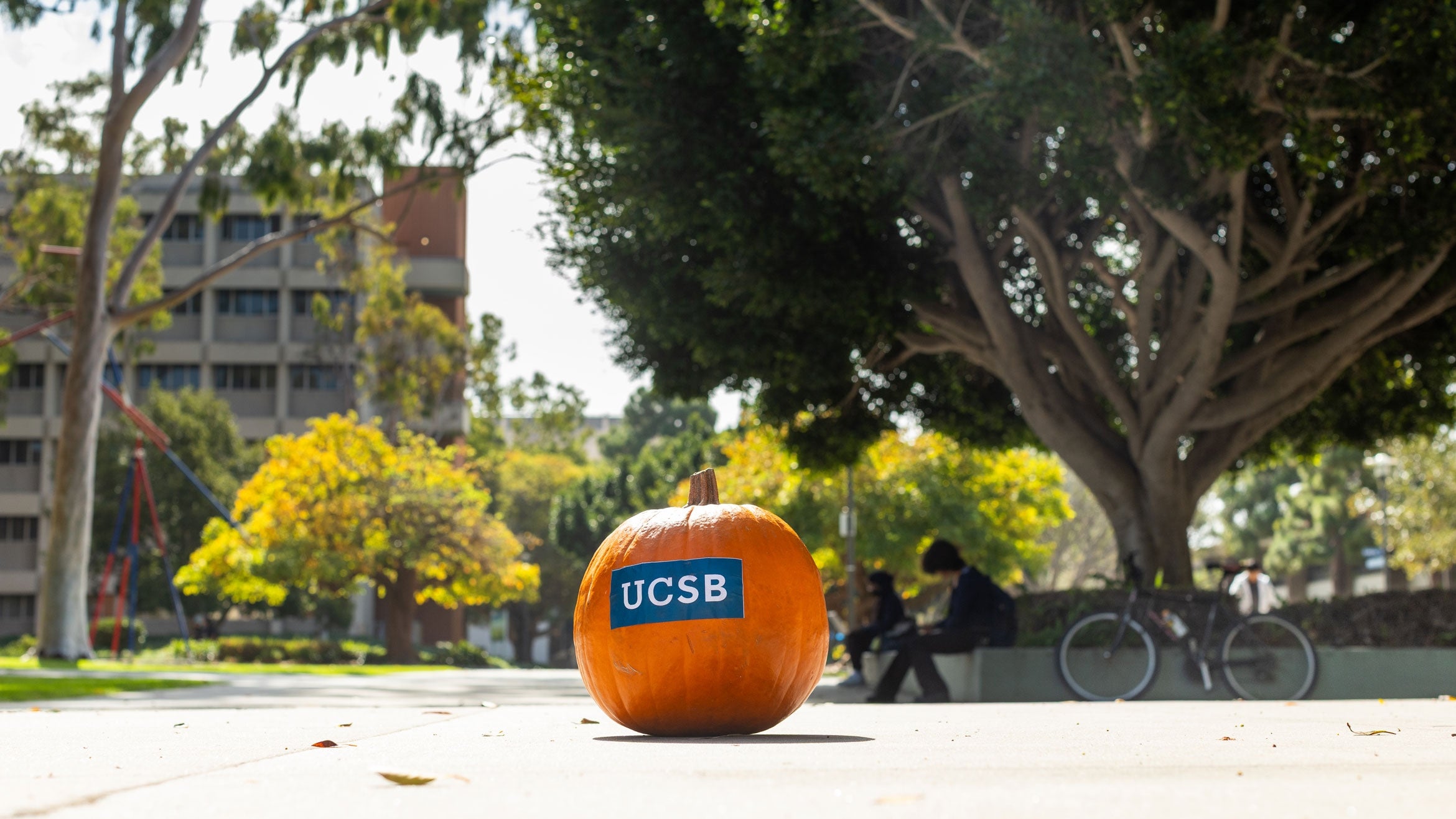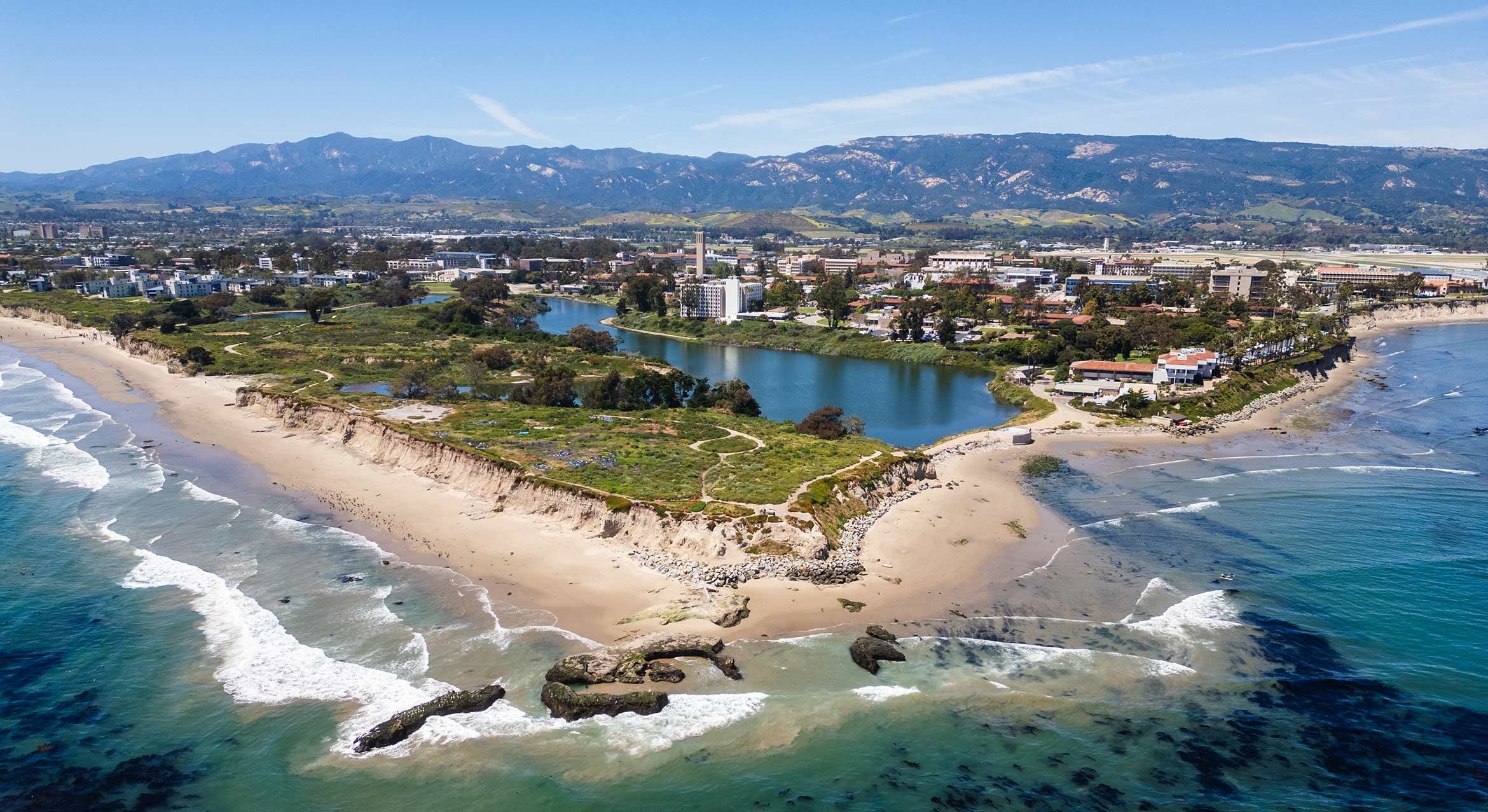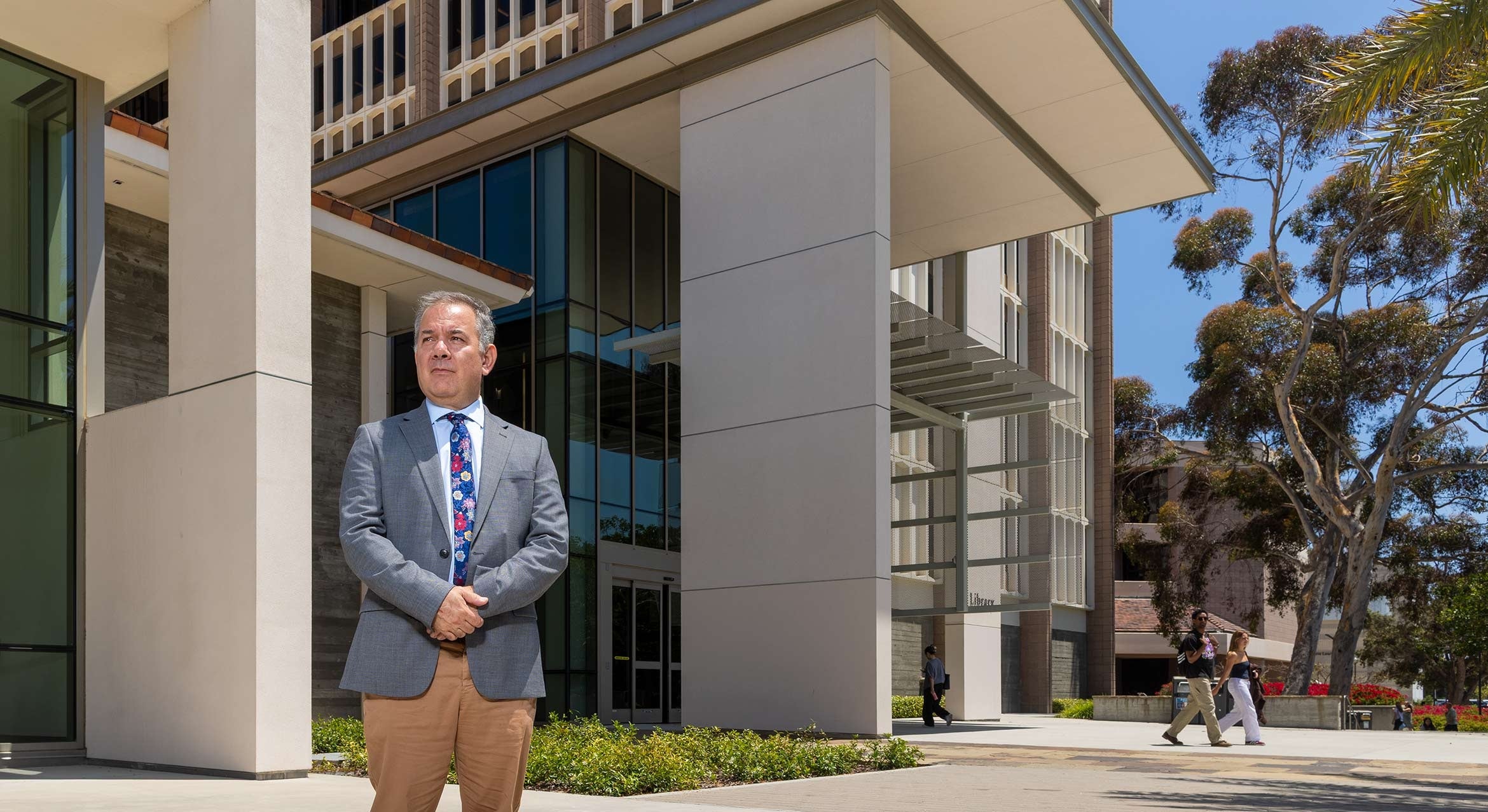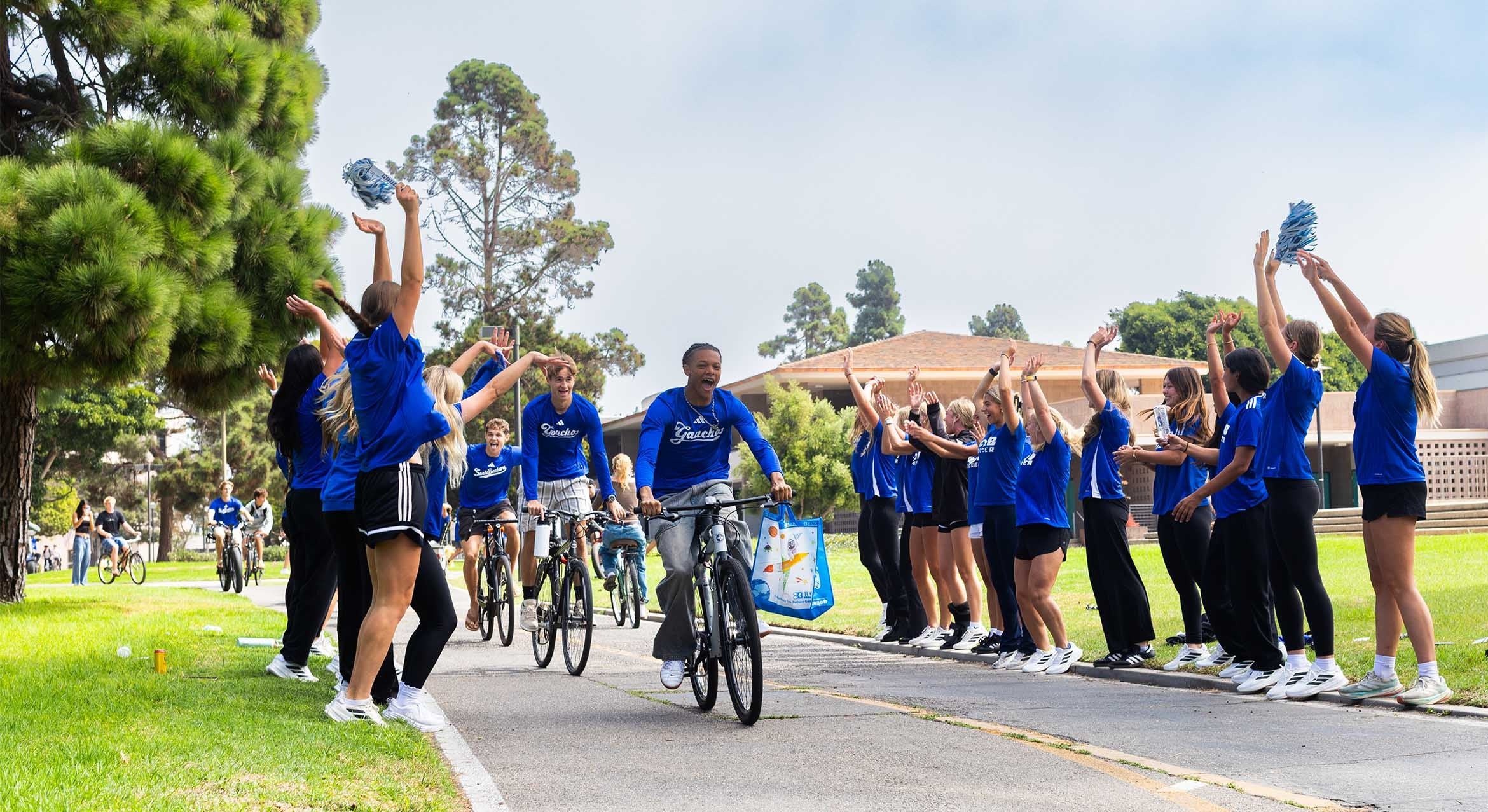
Moving on Up
Movement patterns can reveal a wealth of information about a system, be it human society or animals in the wild. Cellphone, flight and driving data, for example, all evince the lockdown early in the pandemic.
“If you develop methods to study and model movement, then you can learn a lot about the behavior of humans, animals, really anything that moves, and how they interact with their environment,” said Somayeh Dodge, an assistant professor in UC Santa Barbara’s Department of Geography, who uses movement to investigate changes and feedback between groups and their environment — from local responses to wildfire to the behavior of big cats in Thailand.
Dodge recently received a prestigious Early CAREER Award from the National Science Foundation and an Emerging Scholar Award from the Spatial Analysis and Modeling (AAG-SAM) Specialty Group of the American Association of Geographers. The honors recognize her work to advance Geographic Information Science education and her research to study movement as an indicator and model of change.
“I’m so honored and grateful for these awards, and for the recognition from the AAG-SAM Specialty Group,” Dodge said. “The CAREER award will enable me to develop my research agenda and be creative in a topic I love to work on.” It also relieves some of the pressure of finding funding early in her career, she added.
“Somayeh Dodge is doing amazing research on modeling and visualization of movement data, and her work is having a major impact within and beyond the field of geography,” said Department Chair Stuart Sweeney. “We are delighted she was selected for the CAREER and Emerging Scholar awards, but not at all surprised. Professor Dodge is a first-rate scientist, and we expect that she will continue to make foundational contributions in the coming years.”
The Emerging Scholar Award honors early- to mid-career scholars who have made significant contributions to education and research initiatives that are congruent with the mission of the American Association of Geographers Spatial Analysis and Modeling Specialty Group. The CAREER Award, meanwhile, is among the NSF’s most prestigious in support of early-career faculty who have the potential to serve as academic role models in research and education.
Funding from the CAREER Award will enable Dodge to expand her MOVE Research Lab by taking on additional graduate students and opening research opportunities to undergrad students. It also will allow the group to obtain more data, since many mobile datasets are collected and compiled by private companies.
Dodge takes a broad approach to movement science. She’s interested in both Lagrangian and Eulerian perspectives. The former follows something as it moves, while the latter considers movement from a fixed position.
Each perspective offers different insights, Dodge explained. The fixed perspective is good for exploring how people interact with different spaces, like the activity in a city’s downtown. Following a trajectory enables her to learn how we move, where we go and so forth. Dodge plans to tackle some of the challenges involved in integrating these two perspectives to create an approach that provides a more complete account of a system.
Her CAREER-funded research project has three major components. The first focuses on how government policies affected people’s movements and reactions during the pandemic lockdowns within the United States. Dodge suspects that population movement can provide a model for how people react to drastic changes in their environment.
Also investigating how wildfires affect human movement at intermediate scales, Dodge hopes that movement data may lead to better models of wildfire evacuations in the future.
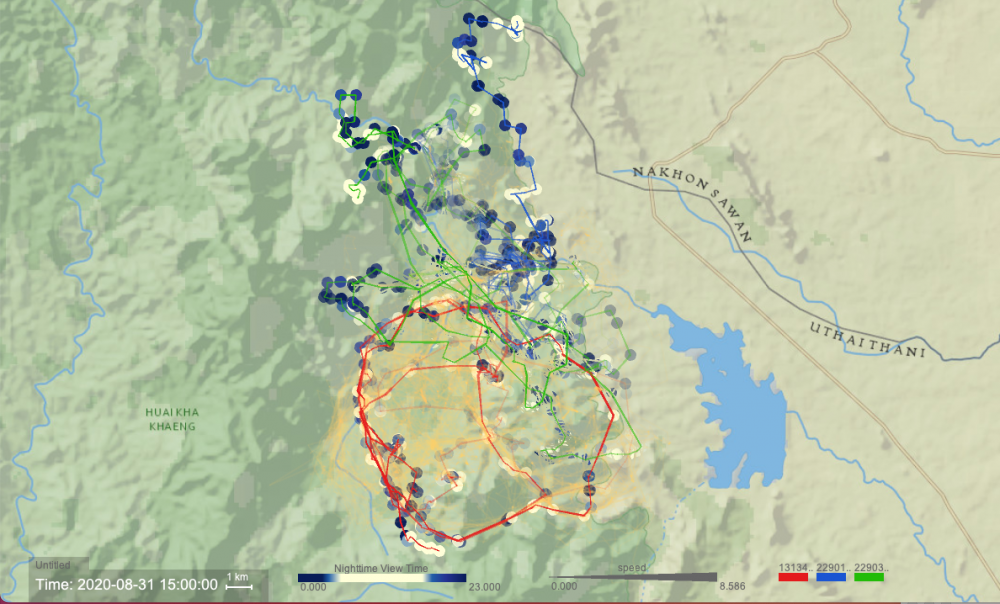
Dodge used her software, DynamoVis, to map the movements of a mother tiger (red) and her two male cubs (blue and green) around the Western Forest Complex in Thailand. The points show day (light yellow) and night (navy) locations. The orange shows the history of the movement paths over the last 6 months.
Photo Credit: SOMAYEH DODGE
But her lab is interested in more than just human movement. For the third piece of the project, the group is using GPS data to study the activity of tigers and leopards in the Huai Kha Khaeng Wildlife Sanctuary, located within the Western Forest Complex in Thailand, a United Nations World Heritage site. Dodge is curious how these keystone species interact in the forest and how shifts in their environment — like changes in land use — are impacting their behavior as reflected in their movement.
Dodge further plans to leverage her CAREER Award to support educational activities like an undergraduate data-integration workshop, data competitions and community outreach. Her lab has developed an open-source visualization software, called DynamoVis, that can map trajectories within an environmental context.
“These are the types of visualizations and representations that can help high school students or junior high students to understand movement phenomena and how they relate to the environment,” she said.
The lab members plan to develop science lessons based on visualization, mapping and movement analysis to help students understand and explore these topics.
